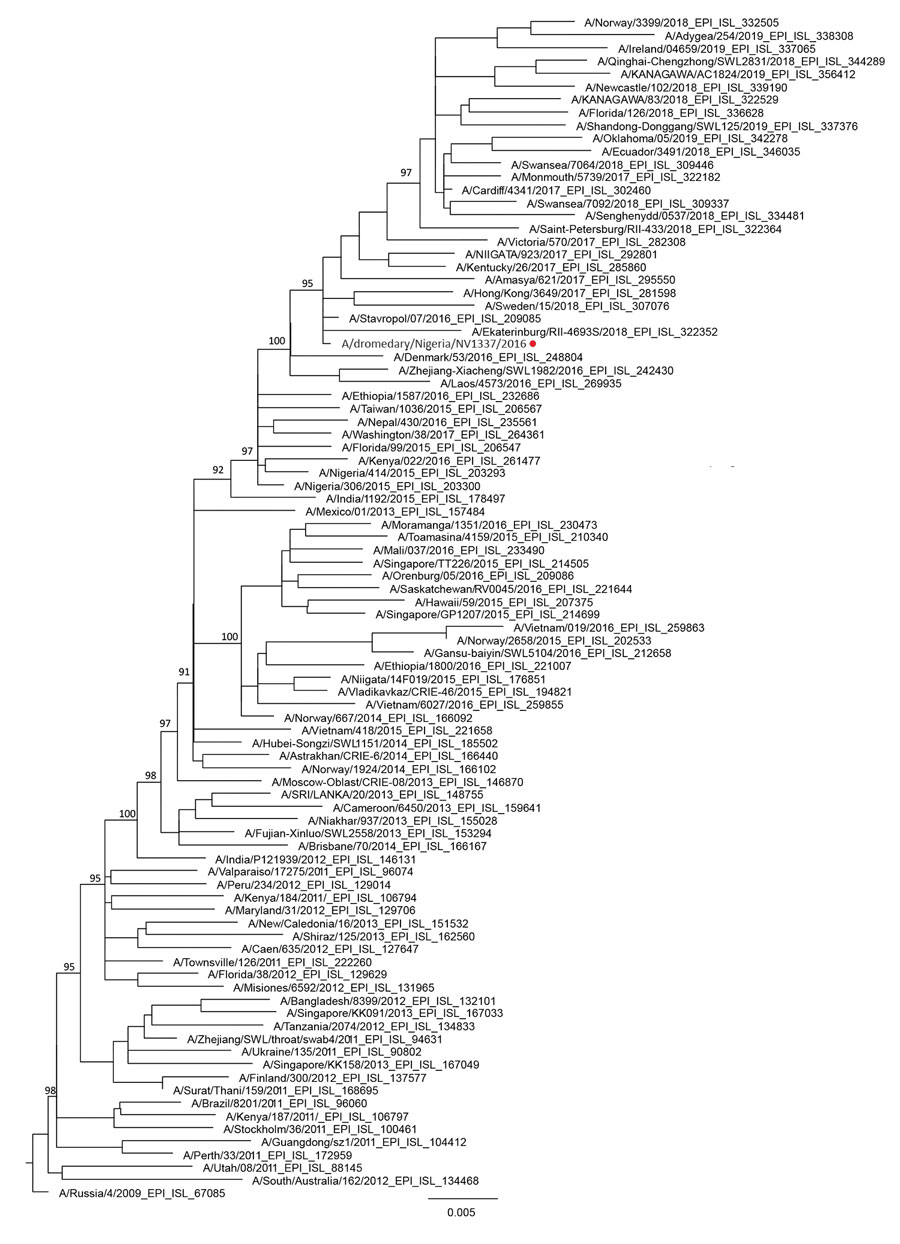Volume 26, Number 1—January 2020
Research Letter
Influenza A Virus Infections in Dromedary Camels, Nigeria and Ethiopia, 2015–2017
Figure

Figure. Maximum-likelihood phylogenetic tree showing relationship of influenza A(H1N1)pdm09 virus from dromedary camel, Nigeria, January 2016 (red circle), relative to other influenza A(H1N1)pdm09 viruses from humans worldwide on the basis of the hemagglutinin gene. Tree was constructed by using a general time-reversible model with FastTree (https://www.geneious.com/plugins/fasttree-plugin) and PhyML (http://www.atgc-montpellier.fr/phyml) (Appendix,). Tree is rooted with an influenza A(H1N1)pdm09 virus collected in 2009. Bootstrap support values for the major branches are shown. Scale bar indicates number of nucleotide changes per base pair.
1These authors contributed equally to this article.
Page created: December 18, 2019
Page updated: December 18, 2019
Page reviewed: December 18, 2019
The conclusions, findings, and opinions expressed by authors contributing to this journal do not necessarily reflect the official position of the U.S. Department of Health and Human Services, the Public Health Service, the Centers for Disease Control and Prevention, or the authors' affiliated institutions. Use of trade names is for identification only and does not imply endorsement by any of the groups named above.